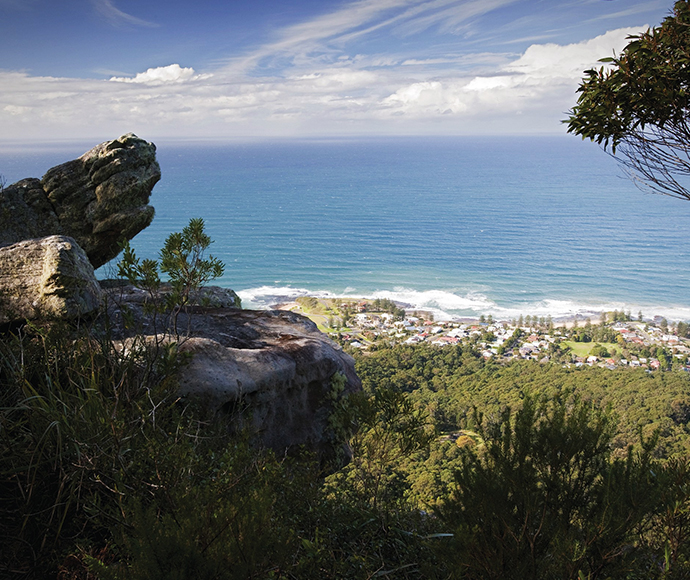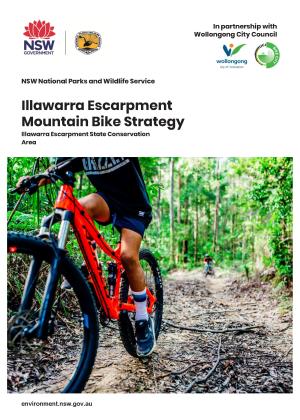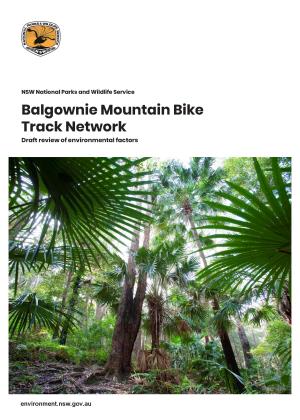Since 2015, the NSW National Parks and Wildlife Service has been working with Wollongong City Council and other stakeholders to establish a sustainable mountain bike network that protects the environmental and cultural values of the Illawarra escarpment and provides opportunities for mountain bike riders.
The demands and impacts of mountain biking on the Illawarra escarpment continue to increase. The safety, environmental and cultural impacts of mountain bike tracks and ad hoc track development need to be addressed to ensure the activity is sustainable on the Illawarra escarpment into the future.
In 2018, an initial concept plan followed by the Draft Illawarra escarpment mountain bike strategy sought to address the need for sustainable mountain biking at Mount Keira and Mount Kembla and Balgownie. Public feedback on the strategy suggested that there needed to be greater consideration given to natural and cultural values, and to remove unsanctioned mountain bike tracks from Mount Keira. In 2020, a revised network in the Mount Kembla area was developed that excluded the summit of Mount Keira.
In June 2021, the NSW Government announced funding for the Illawarra Escarpment Mountain Bike Network to complete planning and assessment, finalise the Illawarra escarpment mountain bike strategy (December 2022) and complete work on the ground at Mount Kembla and Balgownie.
In August 2023, the NSW National Parks and Wildlife Service engaged Synergy Trails to commence work at Mount Kembla. Works will commence adjacent to Harry Graham Drive near Kembla Heights and are expected to take up to 12 months, weather permitting. Tracks not included in the approved network at this location will be closed and rehabilitated.






